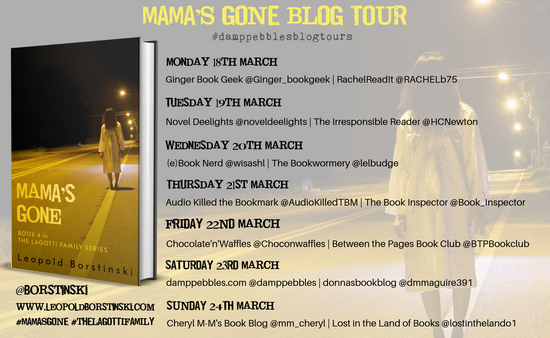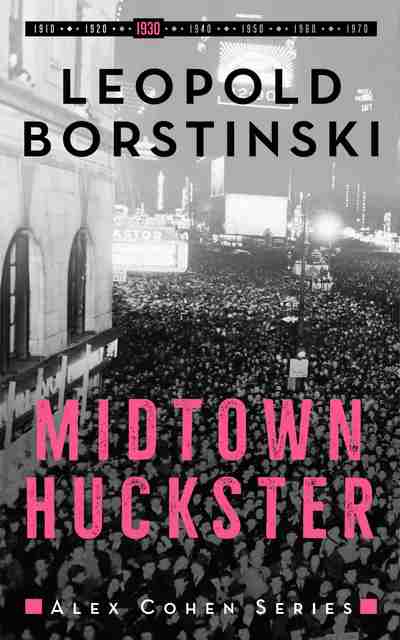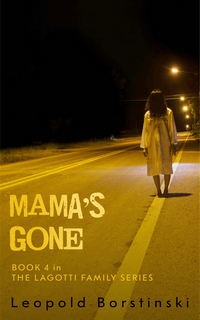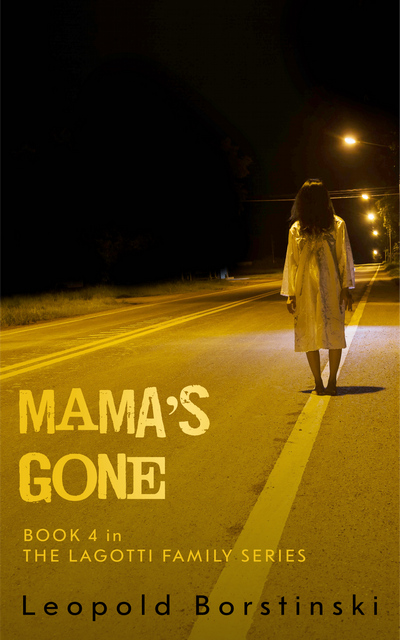
by Leopold Borstinski
Series: The Lagotti Family, #4Kindle Edition, 301 pg.
Sobriety Press, 2019
Read: March 13 – 14, 2019

This is the fourth installment in a series whose timeline goes back to the 60’s. Which seems intimidating and not that approachable — but Borstinski places plenty of context for the reader and ensures that you don’t get lost in chronology.
Since the days of Mario Puzo (with some help from Francis Ford Coppola, Martin Scorsese, and David Chase), there’s been a cultural expectation for mob families — how much of that expectation matches reality is doubtful, but when it comes to fictional depictions we know what we should expect. A strong sense of family, of propriety, of the leadership mantle being passed from father to son in some sort of warped echo of landed nobility. But what happens as the strong leadership ages? Puzo himself gave a taste of this, but Vito Corleone had an heir in place. Of course, Junior Soprano did, too — but that didn’t mean he turned things over to him. Don Winslow’s The Power of the Dog showed the aging leader pass things off to the younger generation, and Robert B. Parker’s Broz family showed what it was like for a crime boss to hand things off to an heir who wasn’t capable of carrying the mantle.
But none of them approached the idea quite like Borstinski did – the first three books seem to chronicle the establishment of Mary Lou Lagotti in the American Crime scene — from robberies to hits on mob figures — Mary Lou showed herself to be brave, decisive and gutsy. With her second husband, Bobby, Mary Lou earned her territory in Los Angeles and the drug, prostitution and gambling money she and her people earned was well deserved and defended. We see a little bit of the establishment of Mary Lou’s empire in the 70’s as the novel opens, but really, things kick off in the mid-90s.
Mary Lou’s children — the driven, smart and careful Alice, and the impulsive, reckless, and rash Frank, Jr.; — are done with college when the book’s action really kicks off. Both are ready and eager to take their place in the family business. Alice is given an assignment or two, meets with success and is given more. Frank, is largely put in positions where he can’t hurt the family. He eventually grows up enough to establish something lasting (with a little help from his mother) on the East Coast, while Alice is living on her own, but near her parents helping expand and solidify the family’s business.
Then (and I don’t feel too bad talking about this, it’s in the blurb) Alice and Bobby start noticing little things that aren’t quite right with Mary Lou — she’s missing signs, she’s making decisions that seem out of character, she loses track of conversations. And the two of them make simple moves to cover for her and start to plan for the future — and try to get Frank involved, too.
Then with the breakup of the Soviet Union and the changes in Russia — Russian crime figures come to the U.S. and start taking territory and business. Mary Lou’s reactions to the challenge on her borders, and she tries to expand (and while she’s dealing with her memory problems) will determine not only her future, but the future of her family.
Watching Alice and Bobby trying to deal with this changing reality is fascinating, trying to keep the appearances of normality while protecting the family and their employees. This kind of story has been told before — with politicians or business leaders — but rarely with the kind of stakes that the Lagotti’s are dealing with.
Technically, this novel a mess — spelling errors, punctuation problems (both missing punctuation ad unnecessary), there are entire conversations without dialogue tags (sometimes you can tell who’s saying what, but not all of the time), word choices that bring out your inner-Inigo (“I do not think it means what you think it means”), etc. I’m not sure that criminals in the 1940’s actually used the phrase “stool pigeon,” I’m even less convinces that hardened killers and drug dealers in the 1990’s did. While the dialogue is full of slang (archaic and otherwise), the narrative avoids it — with one exception, “fellas.” “Fellas” is used repeatedly by characters (including a Russian mobster) and the narrative several times. It’s just jarring. All of the technical issues are repeated — I’ll cut off my list there, it’s fairly representative. It’s possible — I wouldn’t say it’s easy — to ignore the problems with the writing to focus on the characters and story.
For a crime novel, a lot more of the text is devoted to sex than to criminal activity or violence. Call me a prude ,but most of it is unnecessary to the plot and far too detailed — occasionally, it’s used to reveal character and in a way that advances the plot. But largely, it’s about crude titillation and I have no patience for that (especially in the volume this book gives us).
This is a flawed book, but a fascinating premise that’s thoughtfully executed. I’ve read (and watched) plenty of mob/organized crime stories, but the number of creators that have approached these topics is practically nil — making this something out of the ordinary and worthy of a ruminative read.

My thanks to damppebbles blog tours for the invitation to participate in this tour and the materials they provided.

 Leopold Borstinski is an independent author whose past careers have included financial journalism, business management of financial software companies, consulting and product sales and marketing, as well as teaching.
Leopold Borstinski is an independent author whose past careers have included financial journalism, business management of financial software companies, consulting and product sales and marketing, as well as teaching.







